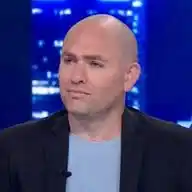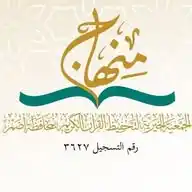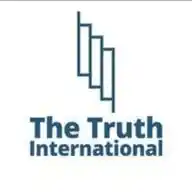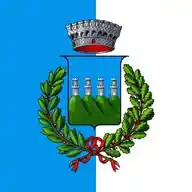
Macongo’s Opinions
32 subscribers
About Macongo’s Opinions
Trainer and analyst of National and International Politics. | Writer | Coach and Member of PEN Canada’s Writers in Exile.
Similar Channels
Swipe to see more
Posts

https://www.facebook.com/share/1A17oHBb3Q/?mibextid=wwXIfr Available in Amazon now Don't let the Media with certain interests fool you, buy your copy and understand the origin of the Congo Conflict in 1 Hour, here is the link.

The Origin of the Congo Conflict from Genesis A Colonial Division That Ignited Endless Conflicts Let me challenge your perspective. These are Congolese citizens from Goma appealing to the M23 rebels—who recently defeated the Congolese National Army, its allies, and even the United Nations forces. Now that the M23 is advancing toward Goma, some Congolese citizens are celebrating their arrival. The person recording this scene is speaking in Swahili, celebrating the M23’s takeover of Goma. I know many of you might be confused. Why would Congolese citizens welcome rebels who are supposedly Rwandan and are taking over their city? This is where misunderstanding and misinformation come into play. Who Are the M23? The M23 rebels are not Rwandan insurgents. They are Congolese citizens who speak Kinyarwanda, which has led to them being labeled as a “Kinyarwanda tribe.” However, in reality, Kinyarwanda is simply a language spoken by both Hutus and Tutsis—two groups that have lived in this part of eastern Congo for thousands of years. Even in Rwanda, people will tell you that the Hutu and Tutsi are not separate ethnic groups but rather social classes that evolved over time. Historically, the Tutsi were cattle herders, while the Hutu were farmers. I understand that this may be complex, but it is essential to grasp this reality: When people claim they are defending Goma from “foreign invaders,” they fail to recognize that Goma is primarily inhabited by Rwandan-speaking tribes, such as the Nande and Hunde, who constitute the majority population in North Kivu. These are the people who run the city, live in its mountains, and populate its islands. So when outsiders enter Goma, claiming to defend it against its own people, they resemble fish trying to fight against water. The Futility of Fighting Against Local Populations Guerrilla warfare is a strategy that conventional armies struggle to defeat. The U.S. failed in Afghanistan because it could not root out the Afghan fighters. In the same way, fighting in eastern Congo is a battle that cannot be won by external forces. The rebels blend into the local population—civilians by day, fighters by night. Some may argue, “But we see people fleeing.” Yes, some flee, but that highlights the real issue Africa faces: tribal conflicts. The Colonial Roots of the Conflict The struggle of the so-called “Kinyarwandan-speaking people” for their legitimate rights goes back to colonialism and the Berlin Conference of 1884–1885. During this division, some Kinyarwandan-speaking communities remained in Congo, while others stayed in Rwanda. However, they remained the same people, maintaining strong ties with other tribes. For instance, the Kinyarwandan-speaking communities and the Nande people have been historically close. King Kigeli IV Rwabugiri of Rwanda once revered the spiritual deities of the Nande, leading to a pact that forbade conflict between the two groups. Post-Colonial Discrimination Despite colonial powers allowing these groups to coexist, post-independence leaders, such as Mobutu Sese Seko, sought to maintain power by dividing them. In the 1960s, Mobutu implemented nationalist laws that stripped certain tribes—especially those speaking Kinyarwanda—of their Congolese identity, labeling them as “foreigners” from Rwanda. In 1972, to avoid persecution, many Kinyarwandan-speaking people in South Kivu changed their identity to “Banyamulenge.” However, this did not stop their marginalization. • In 1986, they were denied voting rights. • In 1991, during Congo’s national dialogue, they were excluded. • In 1996, Mobutu gave them an ultimatum: leave the country or face persecution. This persecution contributed to the outbreak of war. Rwanda’s leadership supported Laurent-Désiré Kabila in toppling Mobutu, highlighting that the conflict had deeper historical roots. The M23 and the Regional Crisis Contrary to common narratives, the Banyamulenge (Tutsis in Kivu) are Congolese. The colonial borders placed some Tutsis in the Democratic Republic of Congo (DRC) and others in Rwanda. This does not make them Rwandan. The M23 was deliberately formed to protect the interests of Congolese Tutsis. However, the conflict is not just about identity—it is also about political maneuvering. • The Kinshasa government accuses Rwanda of supporting the M23 to destabilize Congo and exploit its resources. • Rwanda, in turn, argues that it must defend itself from threats posed by rebel groups in Congo. In 2019, when Félix Tshisekedi took power, he signed agreements allowing Rwandan and Ugandan forces to operate in Congo against insurgent groups. But now, diplomatic tensions between Rwanda and the DRC have escalated. The Berlin Conference: The Root of Africa’s Problems South Africa’s attempts to stir diplomatic tensions lack substance. Instead of being distracted, Africans must focus on continental reunification. It is time to disregard the arbitrary colonial borders imposed by the Berlin Conference of 1884–1885 and restore Africa’s unity. Many African nations were divided without considering the continent’s existing political and tribal structures. Before colonial rule, Africa had its own governance systems, respecting its kingdoms and tribal organizations. Rivers, mountains, and forests often served as natural boundaries—not artificial lines drawn by Europeans. The partition of Africa led to significant consequences: • Congolese people ended up in Angola and Uganda due to colonial borders. • The reverse is also true—some Angolans and Ugandans found themselves in the Congo. This historical injustice must be corrected, and Africa must reclaim its unity. João Macongo Writer and Political Analyst














